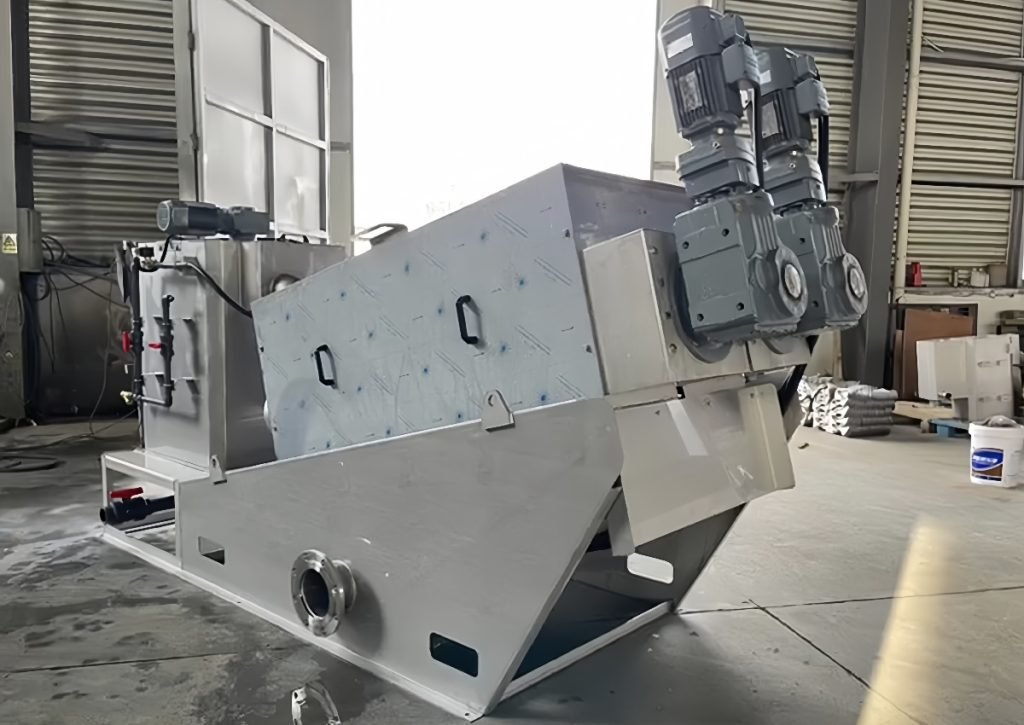The screw press, a sludge dewatering machine, employs the screw extrusion principle for solid-liquid separation. It utilizes powerful squeezing forces generated by variations in screw diameter and pitch, along with minute clearances between the moving and fixed rings, to effectively dewater sludge.

Here are some common issues and solutions encountered during the operation of the screw press:
1. Screw Layering Machine Slagging or Jamming:
Cause: Presence of large particles or easily clumped substances in the sludge.
Solution: Regularly clean the equipment to prevent particle buildup. Use cleaning agents or water flushing if necessary.
2. Motor Overload or Thermal Protection Trigger:
Cause: Equipment operates beyond its load capacity, leading to motor overheating and protection triggering.
Solution: Adjust operational parameters within the specified load range. Inspect the motor cooling system to ensure proper ventilation.
3. Poor Sealing Performance of the Screw Layering Machine:
Cause: Wear or damage to sealing components.
Solution: Periodically inspect and replace seals to ensure optimal equipment sealing performance.
4. Poor Drainage:
Cause: Blockage in the drainage outlet hindering water discharge.
Solution: Clear the drainage outlet to maintain effective water drainage.
5. Abnormal Vibration:
Cause: Uneven equipment installation or damaged mechanical components.
Solution: Adjust equipment level for balanced installation. Inspect and replace damaged mechanical parts.
6. Electrical Malfunctions:
Cause: Loose cable connections, circuit faults, etc.
Solution: Check cable connections, repair, or replace faulty circuit parts.
7. Excessive Noise:
Cause: Loose or damaged equipment components causing friction noise.
Solution: Inspect and tighten all components, promptly repair or replace damaged parts.
8. Abnormal Speed of the Screw Layering Machine:
Cause: Motor or inverter malfunction.
Solution: Check the working status of the motor and inverter, repair, or replace faulty parts.
When addressing these issues, prioritize safety by stopping equipment operation first, and follow the equipment’s operation manual. If uncertain about handling or in need of professional assistance, it is advisable to contact the equipment manufacturer or maintenance professionals. Timely preventive maintenance is also crucial in reducing the occurrence of faults and extending the equipment’s lifespan.